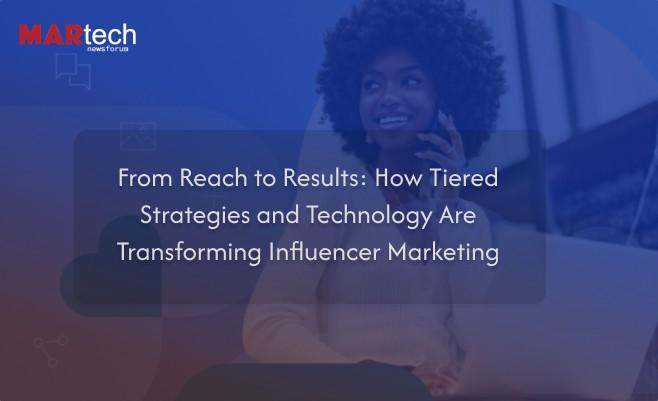
Influencer marketing is no longer just a brand-awareness play or a numbers game. As marketers demand deeper ROI, the industry is undergoing a critical transformation — from being dominated by mega-influencers and vanity metrics to more strategic, performance-driven, and tech-enabled campaigns. At the heart of this shift is the rise of tiered influencer strategies powered by intelligent marketing technologies, which are helping brands move from broad reach to measurable business outcomes.
The Maturity of Influencer Marketing
What was once considered a novelty has now matured into a $24 billion global industry. But with that growth has come increasing scrutiny. Brands are now asking tougher questions: What’s the real ROI? Are followers translating into sales? How do we scale trust without scaling budget inefficiency?
The answer, increasingly, lies in how brands segment their influencer partnerships, choosing collaborators not just by follower count, but by audience alignment, engagement behavior, and conversion capability.
Introducing Tiered Influencer Strategies
Tiered strategies are essentially a framework for organizing influencer relationships into layers — typically defined by follower size, content influence, and campaign objective. A well-structured tiered system might look like this:
- Tier 1: Macro and Celebrity Influencers (500K+ followers)
Used primarily for awareness, high-visibility moments, and brand association. These influencers drive reach and mass exposure, but often come with a high price tag and lower engagement-to-follower ratios. - Tier 2: Mid-Tier Influencers (50K–500K followers)
Offering a balance of reach and engagement, these influencers are ideal for product launches, experiential campaigns, or when seeking authentic storytelling at scale. - Tier 3: Micro and Nano Influencers (1K–50K followers)
These influencers may have smaller followings but tend to enjoy higher trust and interaction within niche communities. They are increasingly being used for conversion-focused campaigns, product reviews, and referral strategies.
This structured approach allows marketers to align campaign goals with influencer tiers, using top-tier talent for visibility, mid-tier for education, and micro-tier for activation. It’s no longer about choosing one kind of influencer — it’s about blending tiers strategically to cover the full funnel.
Technology is the Enabler
While the concept of tiering isn’t new, what’s powering its effectiveness today is a wave of advanced influencer marketing platforms and AI-driven tools. These platforms offer precise audience analytics, fraud detection, real-time performance tracking, and content quality scoring — allowing brands to match with the right creators at the right time.
Platforms like CreatorIQ, Aspire, and GRIN, for example, offer advanced segmentation features that help marketers discover creators based on hyper-specific data points: audience interests, buying behavior, sentiment analysis, and geographic relevance.
Meanwhile, AI tools are being used to:
- Forecast campaign performance based on past data
- Optimize influencer selections by target persona
- Dynamically adjust tier allocations based on ROI signals mid-campaign
Technology removes much of the guesswork, making influencer marketing as accountable and data-driven as any other digital channel.
From Vanity Metrics to Real KPIs
A key aspect of this transformation is the shift in how success is measured. Brands are increasingly moving away from likes and impressions as primary metrics, instead focusing on:
- Cost per acquisition (CPA)
- Engagement quality (comments, saves, shares)
- Conversion attribution (via trackable links, promo codes, and pixel integrations)
- Customer lifetime value (LTV) from influencer-acquired leads
The integration of CRM and e-commerce data with influencer platforms allows for full-funnel attribution, showing not just who saw the campaign — but who clicked, bought, and stayed loyal.
A Scalable, Repeatable Model
By using tiered strategies and tech, brands are now able to scale influencer marketing without scaling inefficiency. They can replicate successful campaigns by using templates, segment-specific content strategies, and programmatic outreach. This also opens the door for always-on influencer programs rather than seasonal bursts — building long-term partnerships with real business value.
The Human Element Still Matters
Despite the rise of automation and AI, one thing hasn’t changed: authenticity drives results. Consumers are savvy, and they can spot inauthentic sponsored content from miles away. The most successful brands are those that treat influencers not as ad units, but as partners and creators.
Even in a tiered system, trust and creative freedom remain essential. Technology may drive targeting and measurement, but human connection drives influence.
Looking Ahead
As we move deeper into 2025, influencer marketing will look less like an art project and more like a strategic growth channel. The fusion of tiered approaches with advanced technology offers a roadmap for brands ready to turn likes into leads, followers into customers, and campaigns into sustainable, data-driven programs.
The message is clear: it’s no longer enough to chase reach. The next era of influencer marketing belongs to those who can engineer results — one tier at a time.